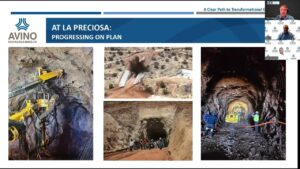REAL DE CATORCE, Mexico For the Huichol Indians, the desert mountains here are sacred, a cosmic portal with major mojo, where shamans collect the peyote that fuels the waking dreams that hold the universe together.
Their struggle comes as indigenous people from Alaska to the Amazon are rallying to protect not just their environment but also their cultures from decay.
This raises a tough question: How do you protect a cosmic portal?
For them the whole mountain is a temple, and the gold and silver below the ground are there for a reason they contribute to the energy, and it would be best if they just left it alone, said Eduardo Guzman, an activist and spokesman for the Huichol living in a hard-scrabble pueblo called Las Margaritas at the foot of the magic mountain.
Past Guzmans ranch gate, a minivan loaded with Huichol, dressed in embroidered muslin tunics and straw hats dancing with colored balls and feather totems, bounced by on their way to a ceremony. The elders said they were too busy to talk and departed in a cloud of dust.
The Huichol had come from their village 150 miles away to hunt peyote the hallucinogenic cactus they call the blue deer. The Huichol eat the peyote cactus raw or dried, producing auditory and visual hallucinations pleasant or not and sensations of introspection and deep insight.
For the Huichol, peyote serves as the central sacrament of their rituals, said Paul Liffman, an anthropologist at the Colegio de Michoacan, who has studied the group for years. It is not a party drug. It is taken to illuminate the user, to light them from inside.
As the permits are sought for the silver mine, and other threats mount in the area (another outfit seeking gold, a hothouse tomato industry nearby), Liffman said, I have never seen the Huichol this scared. In their view, this is an existential threat.
The Huichol, who might number 50,000, are poor but proud. They may be subsistence farmers eking out a living growing beans and corn, but they believe that their rituals to honor the deities and their ancestors and their protection of a sacred geography of springs, hills and beaches are necessary to preserve the integrity of the entire universe.
Theyre not exactly given to modesty, Liffman said.
Wary of outsiders, living in inaccessible villages far away, they are allying themselves with a loose confederation of hippies and anthropologists, Mexican activists and horticultural tourists who have made the former ghost town of Real de Catorce into a kind of New Age energy hub of their own, where an ersatz Apache from Italy might take a couple of visiting seekers into the desert to hunt some recreational blue deer for themselves.
Humberto Fernandez has lived in Real de Catorce since the 1970s. A local character and a character actor Fernandez owns the Real Hotel, and the lobby is lined with photos of the hotelier with Julia Roberts, Brad Pitt and Johnny Depp. The movie The Mexican was filmed here, and its director, Gore Verbinski, is a friend.

















